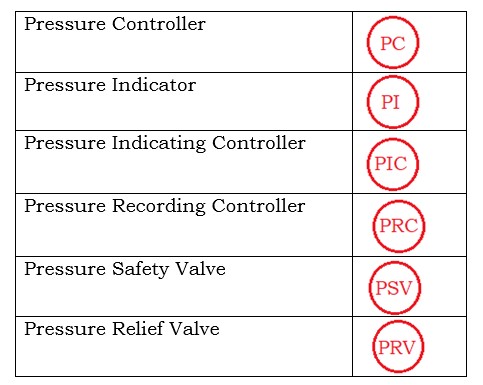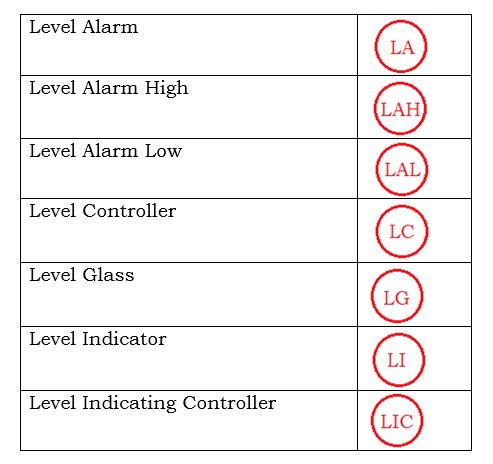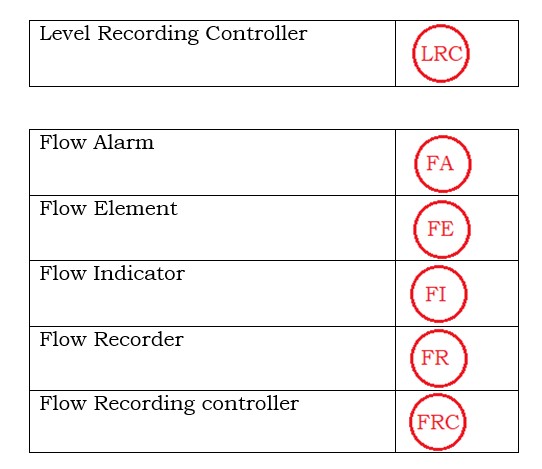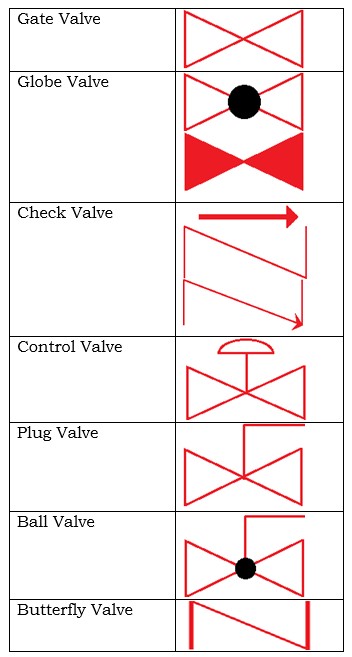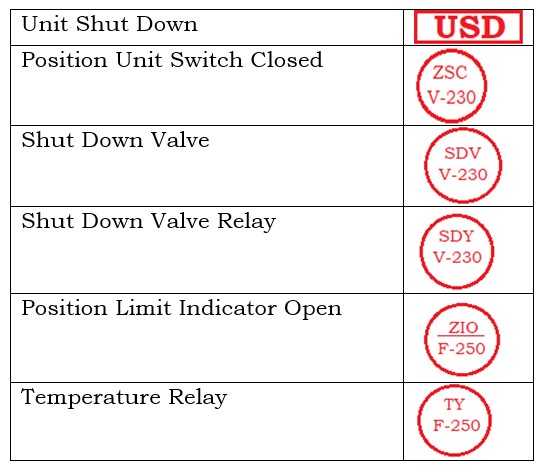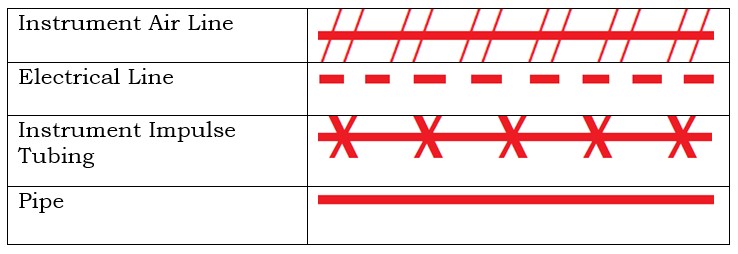- Generally, the P&ID abbreviations are composed of two or three letters followed by numbers.
- The process variable such as Flow, Level, Pressure, and Temperature to be controlled is indicated by the first letter in P&ID abbreviation as F, L, P, and T.
- The controlling function of the instrument such as Indication, Recording, Transmitter and controlling is indicated by the second letter in P&ID abbreviation as I, R, T, and C.For example, an instrument abbreviation “LT” indicates a “Level Transmitter”.
- The third letter when included in the instrument abbreviation of P&ID indicates the special function to describe a dual function such as recording and controlling, or indicating and controlling. For example, instrument abbreviations like
- FIC indicates a Flow Indicator and Controller.
- TRC indicates Temperature Recorder and Controller.
- PAL indicates a Pressure Alarm Low. This PAL describes the alarm function in case of lower pressure conditions.
- The combination of alphabets from A to Z represents the specific functions and identification of instruments in the Piping and Instrumentation Diagram.
- The concept of P&ID is versatile and it is known as the heart and key of industrial processes.
- Representation of instrument abbreviations used in P&IDs with the standard set of symbols defined by ISA 5.1.
The below table consists of some possible combinations of instrument abbreviations for various process variables.
1.The first column denotes various process variables.
2.The second column denotes the measured variable or indicating variable.
3.The third column denotes the controller function of various process variables such as Recording and Indicating.
4.The fourth column denotes device readout they may be either Recording or Indicating.
Some instrument abbreviations along with their functions used with P&ID symbols to represent Piping and Instrument diagram are shown in Table 1.
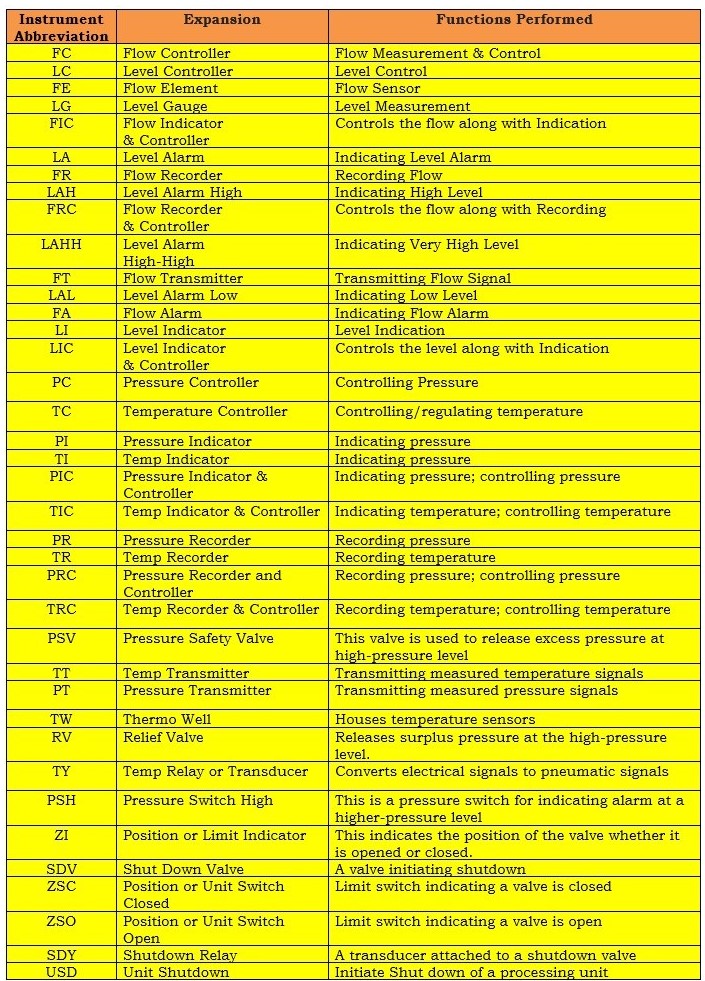
Some possible combinations for various instruments used for measuring variables are represented by the first letter shown in below Table 2.

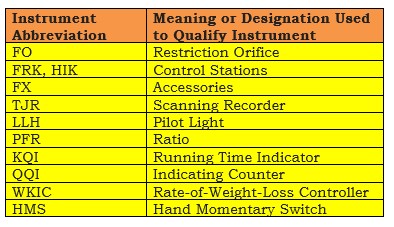
The main objective of making some possible combinations of these process instruments is to understand the purpose for what they are being used in an instrumentation diagram or process flow diagram.
Below Table 3 shows some instrument abbreviations for devices like switches, alarms, transmitters, solenoids, relays, primary elements, test points, probe, view glass, as well as final elements.

What do Tag Numbers on P&ID Diagrams represent?
- The tag numbers on the Piping and instrumentation diagrams representthe identification of the instrument used for the particular control system in a process station.
- These tag numbers are associated with a process variable followed by its function performed such as indicating and controlling process control loops such as Flow, Level, Pressure, and Temperature.
What are Switches & Alarm Devices?
1. Switching Device (S):
- This is known as a selector switch.
- This enables the mode selection from manual mode (M) to auto mode (A in case of DCS), or local (L) to remote (R) by simply rotating.
- It is a device used for switching on or switching off equipment such as motors, pumps, valves, and so on.
- These are used for alarm activation to alert human operators to take special action or for initiating process and safety interlocks used to trip the system.
2. Alarm device (A):
- It is an annunciator device to alert an operator. This may be a sound or lighting device.
- This alarm is triggered by a current signal of 4 20 mA coming from a transmitter.
3. High and Low Alarms:
- The letters H and L indicate the level of High or Low. But during some undefined conditions, these may be omitted.
- In the case of the level transmitter, this signal can be used in the soft program to assign alarms for low and high i.e. LAL & LAH.
The P&ID diagrams of some instruments shown below are grouped by separate tables
